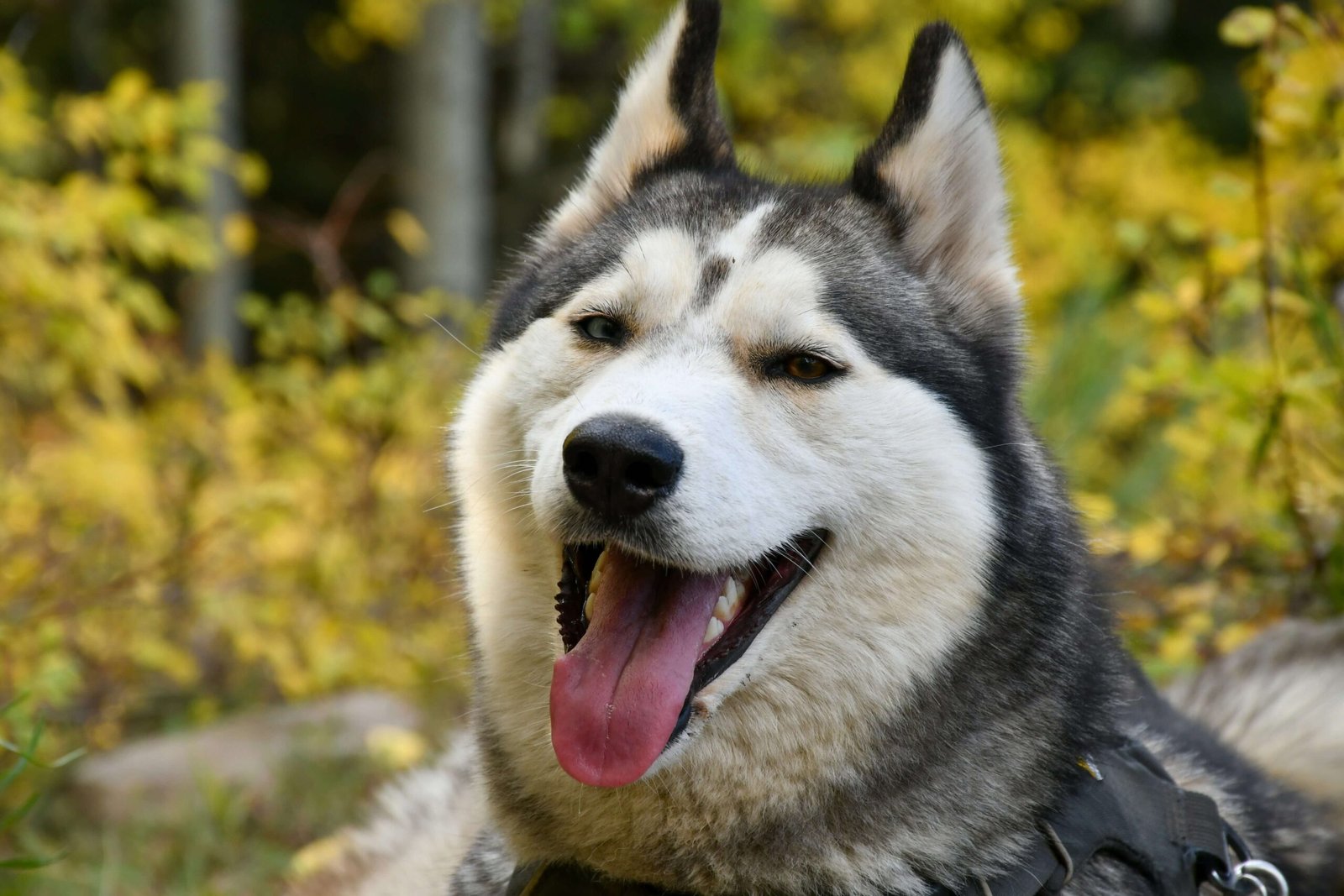Why Do Dogs Howl? Unpacking the Mystery Behind This Unique Behavior
Few sounds evoke as much curiosity and emotion as a dog’s howl. Whether it’s a lone wolf-like cry echoing through the night or a playful response to a siren, dog howling is both fascinating and mysterious. But why do dogs engage in this behavior? Is it instinctual, communicative, or something else entirely? Understanding the reasons behind dog howling can help you better connect with your furry companion and address any underlying concerns. In this blog post, we’ll explore the science, history, and practical tips related to dog howling, shedding light on this timeless canine trait.
Common Reasons Why Dogs Howl
Dog howling is a natural behavior rooted in their ancestry and communication needs. Here are some of the most common reasons why your dog might be howling—and what it could mean.
Ancestral Instincts:
Dogs descended from wolves, who use howling as a way to communicate over long distances. This instinct may still drive domesticated dogs to howl occasionally.Response to Sounds:
Sirens, musical instruments, or even high-pitched human voices can trigger a dog’s howling reflex, as these sounds mimic the tones of other animals.Territorial Communication:
Howling can serve as a warning to other animals or dogs that they’re entering your dog’s perceived territory—a behavior tied to their protective instincts.Seeking Attention:
Some dogs howl when they feel ignored or want interaction. It’s their way of saying, “Hey, look at me!”Separation Anxiety:
Dogs experiencing loneliness or anxiety may howl as a way to express distress and seek comfort from their owners.
Understanding these triggers can help you determine whether your dog’s howling is normal or if it signals an issue that requires attention.

How to Address Excessive Howling in Dogs
While occasional howling is perfectly normal, excessive howling can indicate underlying problems or become disruptive. Here are some strategies to manage and reduce unwanted howling behavior.
Identify the Trigger:
Observe your dog’s environment and note what prompts their howling. Removing or addressing the trigger can often resolve the issue.Provide Mental Stimulation:
Boredom is a common cause of excessive howling. Puzzle toys, interactive games, and training sessions can keep your dog mentally engaged.Train with Positive Reinforcement:
Reward your dog for quiet behavior and redirect them when they start howling unnecessarily. Consistency is key to reinforcing desired actions.Address Separation Anxiety:
If your dog howls when left alone, gradually acclimate them to being by themselves using short departures and calming techniques like music or pheromone diffusers.Consult a Professional:
Persistent or unexplained howling may require guidance from a veterinarian or animal behaviorist to rule out medical or behavioral issues.
By implementing these steps, you can curb excessive howling and restore harmony in your household.
Check this guide 👉Why Is My Dog Howling in Its Sleep? Best 7 Expert Tips!
Check this guide 👉Why Does My Dog Howl When I Howl? Best 7 Expert Tips!
Check this guide 👉Why Does My Dog Howl When I Leave? Best 7 Behavior Tips!
Reasons for Dog Howling | Ways to Manage Howling |
|---|---|
Ancestral instincts | Provide outlets for natural behaviors |
Response to environmental sounds | Desensitize to triggering noises |
Territorial communication | Reinforce boundaries calmly |
Attention-seeking behavior | Ignore unwanted howling; reward silence |
Separation anxiety | Gradually build independence routines |
Howling Breeds: Which Dogs Are More Likely to Howl?
Certain breeds are more prone to howling due to their genetic predispositions and historical roles. If you own one of these breeds, understanding their tendencies can help you anticipate and manage their vocalizations.
Siberian Huskies:
Known for their wolf-like appearance, huskies frequently howl as part of their communication repertoire.Alaskan Malamutes:
Another sled-dog breed, malamutes have strong vocal cords and love to “talk” through howls.Beagles:
Originally bred for hunting, beagles use howling to signal prey locations—a habit that persists today.Bloodhounds:
These scent hounds rely heavily on vocalizations during tracking, making them prone to howling.Dachshunds:
Despite their small size, dachshunds were bred to hunt badgers and will howl to alert their pack.
Knowing your breed’s tendencies allows you to appreciate their unique traits while preparing for potential challenges.
Fun Facts About Dog Howling
Dog howling isn’t just functional—it’s also full of intriguing quirks and surprises. Here are some fun facts about this iconic canine behavior that highlight its charm and complexity.
Howling Can Be Social Bonding:
Wolves howl to strengthen pack bonds, and domestic dogs may do the same when interacting with humans or other pets.Each Dog Has a Unique Howl:
Just like fingerprints, every dog’s howl has slight variations in pitch, tone, and duration—making it uniquely theirs.Some Dogs “Sing” Along:
Certain dogs enjoy harmonizing with music or specific sounds, showcasing their playful side.Howling Can Indicate Health Issues:
In rare cases, sudden changes in howling frequency could point to pain, discomfort, or hearing loss.Humans Have Shaped Howling Behaviors:
Through selective breeding, humans have influenced which dogs howl more frequently based on their original purposes.
These fun facts remind us that dog howling is not only practical but also deeply ingrained in their identity.
The Role of Howling in Pack Dynamics
In wild settings, howling plays a critical role in maintaining group cohesion among canines. Even though domestic dogs don’t live in packs like wolves, remnants of this behavior persist.
Coordinating Movement:
Wild canines use howls to regroup after scattering during hunts, ensuring everyone stays connected.Establishing Boundaries:
Howls mark territory, deterring rival groups from encroaching on their space.Expressing Emotions:
Howling can convey excitement, frustration, or sadness within the pack.Locating Missing Members:
A lost pack member may respond to howls, guiding them back to safety.Strengthening Bonds:
Group howling fosters unity and reinforces social hierarchies.
Learning about these dynamics helps us understand why our dogs might howl—even when living solo with us.
How to Train Your Dog to Stop Howling on Command
If your dog’s howling becomes problematic, teaching them a “quiet” command can help regain control. Follow these steps for effective training.
Use a Calm Voice:
Say “quiet” firmly but calmly when your dog starts howling. Avoid yelling, as it may escalate the situation.Reward Silence Immediately:
As soon as your dog stops howling, offer praise or a treat to reinforce the desired behavior.Practice During Controlled Scenarios:
Simulate known triggers (like playing recorded sirens) to practice commands in a safe setting.Be Patient and Consistent:
Training takes time, so repeat sessions regularly until your dog responds reliably.Avoid Punishment:
Negative reinforcement can increase anxiety, making howling worse instead of better.
With patience, your dog will learn to associate the “quiet” command with calm behavior.
The Emotional Side of Dog Howling
Beyond practical functions, dog howling often carries emotional undertones that reflect their inner world. Recognizing these nuances strengthens the bond between humans and dogs.
Loneliness:
Dogs may howl to express feelings of isolation, especially when separated from loved ones.Excitement:
Some dogs howl out of pure joy, such as when greeting their owners after a long absence.Fear or Anxiety:
Loud noises or unfamiliar situations can trigger fearful howling as a coping mechanism.Playfulness:
Certain dogs incorporate howling into play, mimicking “talking” or “singing” as part of the fun.Empathy:
Dogs may howl in response to human emotions, demonstrating their sensitivity to our moods.
Acknowledging these emotional layers enriches our relationship with our dogs, allowing us to meet their needs more compassionately.
Frequently Asked Questions About Dog Howling
Is it normal for my dog to howl?
Yes, howling is a natural behavior for dogs, especially those with strong ancestral ties to wolves. However, excessive howling may require investigation.
Why does my dog howl at sirens?
Dogs are highly sensitive to high-pitched sounds, and sirens mimic the tones of other howls, prompting them to respond instinctively.
Can I train my dog to stop howling?
While you can’t eliminate howling entirely, you can redirect or reduce it through training and environmental adjustments.
Does howling mean my dog is unhappy?
Not necessarily. Howling can express a range of emotions, including excitement, loneliness, or curiosity. Context matters.
Should I worry if my dog suddenly starts howling more than usual?
Sudden changes in behavior could indicate stress, illness, or discomfort. Consult a vet to rule out any underlying issues.
Why Is My Cats Second Eyelid Showing? Best 7 Expert Tips! Understand causes, health signs, and how to respond when your cat’s third eyelid becomes visible.
How Do I Know If My Cat Died Peacefully? Best 7 Expert Tips! Discover the quiet signs of a peaceful feline passing and find comfort in their final moments.
Cat Allergy Eyes: Best 7 Expert Tips! Discover why your eyes react to cats and learn proven strategies for relief—without giving up your feline friend.
Why Do Abyssinian Cat Colors Matter? Best 7 Expert Tips! Discover the genetics, rare hues, and care secrets behind Abyssinian coat colors for a healthier, happier cat.





